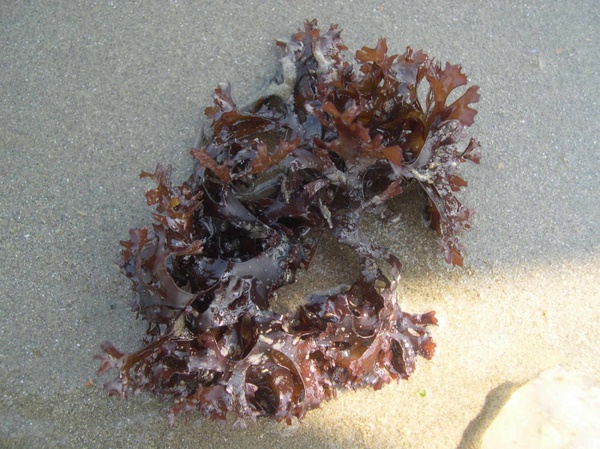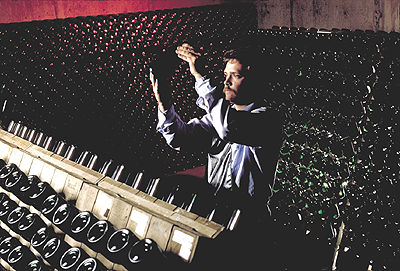Irish moss is a type of seaweed that is commercially harvested in Canada’s Maritime provinces. It is mainly composed of carrageenan, a gelatinous substance. Carrageenan extracted from Irish moss is used as a thickening and gelling agent in foods and other products. It is also used to clarify beverages such as beer.

"Chondrus crispus Stackhouse, 1797" by Nuyttens, Filip is licensed under CC BY-NC-SA 4.0.
What Is Irish Moss?
Irish moss is the common name for the red algae species Chondrus crispus. (A closely related red seaweed, Mastocarpus stellatus, is known as “false Irish moss.”) C. crispus, the only species of the genus in the Atlantic Ocean, grows mostly in coastal regions of North America and Europe. In Canada, it is most abundant in Nova Scotia and the lower Gulf of St. Lawrence. The plants are perennial, grow on rock in lower tidal and subtidal zones, and regenerate from the disclike “holdfasts” that attach them to rocks. Commonly, the fronds are up to 15 cm high, branched (usually in one plane only) and fan-shaped. The colour varies (dark red, purple, yellow-green), depending on physiological conditions. Irish moss has a life cycle consisting of two distinct phases (sexual and asexual).
Irish Moss Industry in Canada
After the Second World War, Canadians increasingly harvested and exported Irish moss to meet the demand for carrageenan in food processing. From about 1950 to 1970, Canada was the world’s top producer of Irish moss. Harvests peaked in 1974, when the Maritime provinces landed some 50,000 tonnes of this seaweed.
Demand decreased in the late 20th century. Other species of red algae, harvested elsewhere in the world, largely replaced Irish moss as a source of carrageenan. Canada’s Irish moss harvests today are a fraction of their former size.
How Is Irish Moss Harvested?
Fishers use rakes to collect Irish moss. One method is to stand in a small boat, in shallow water, and use a hand rake (much like a garden rake) to remove the seaweed from rocks. Another method is drag raking, whereby a boat tows a heavier rake behind it. Irish moss is also harvested from the shore, where it washes up during storms. Prince Edward Islanders pioneered the use of horse-drawn rakes to harvest storm-tossed Irish moss.
In the heyday of Canada’s Irish moss industry, concerns about the negative impacts of raking led to improved rakes and new rules. For instance, regulators set a minimum space separating the teeth of hand rakes. This rule reduced the number of young plants the rakes gathered. By letting these plants mature, fishers could bring in larger harvests. Researchers also improved the design of drag rakes to reduce the number of lobsters they killed and holdfasts they uprooted. These changes helped maintain stocks of both lobsters and Irish moss.

 Share on Facebook
Share on Facebook Share on X
Share on X Share by Email
Share by Email Share on Google Classroom
Share on Google Classroom








